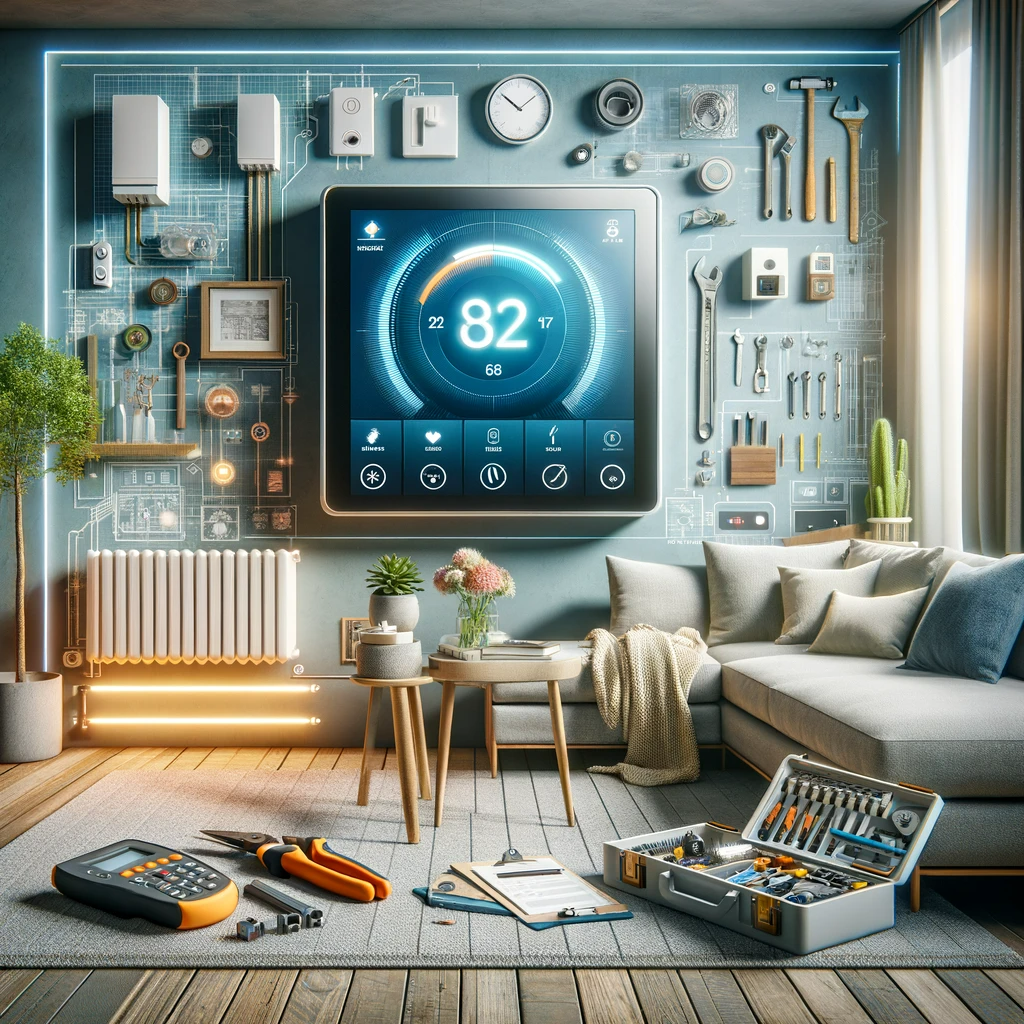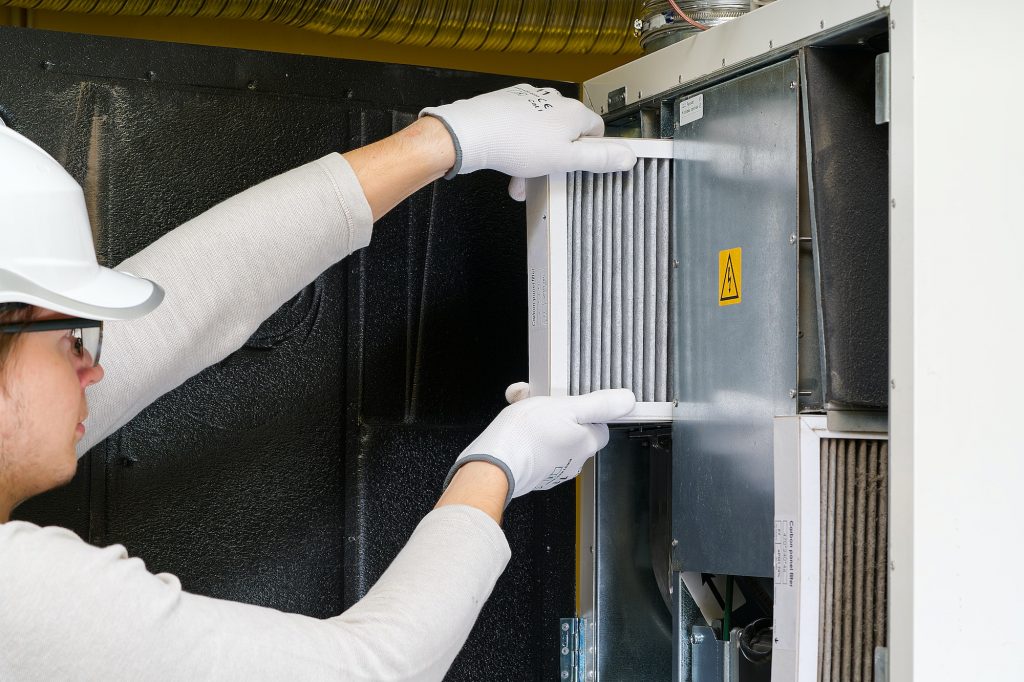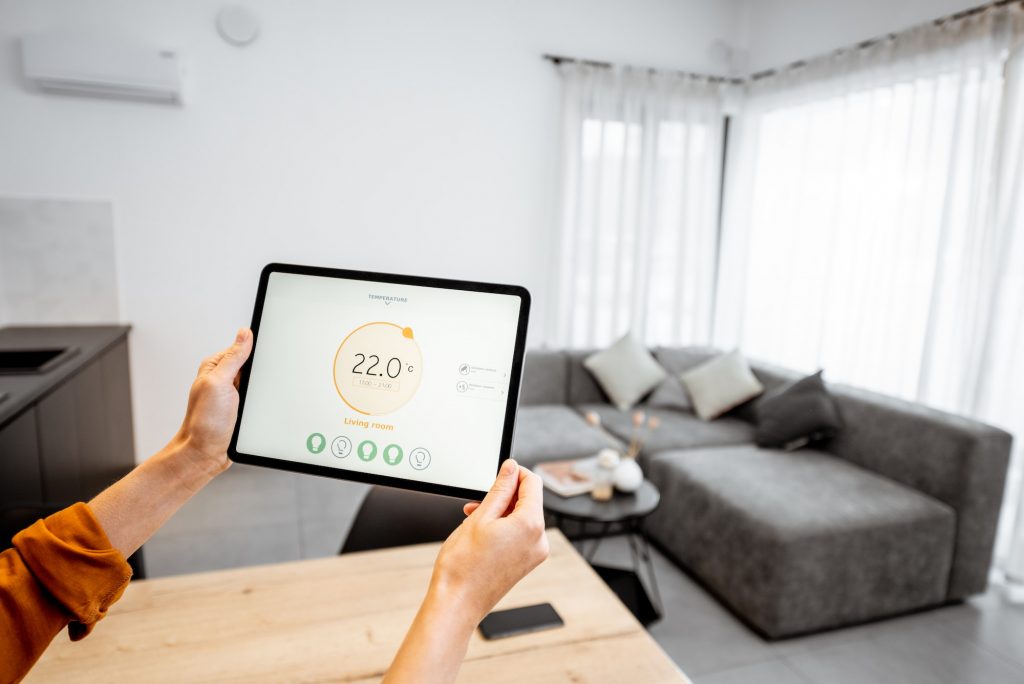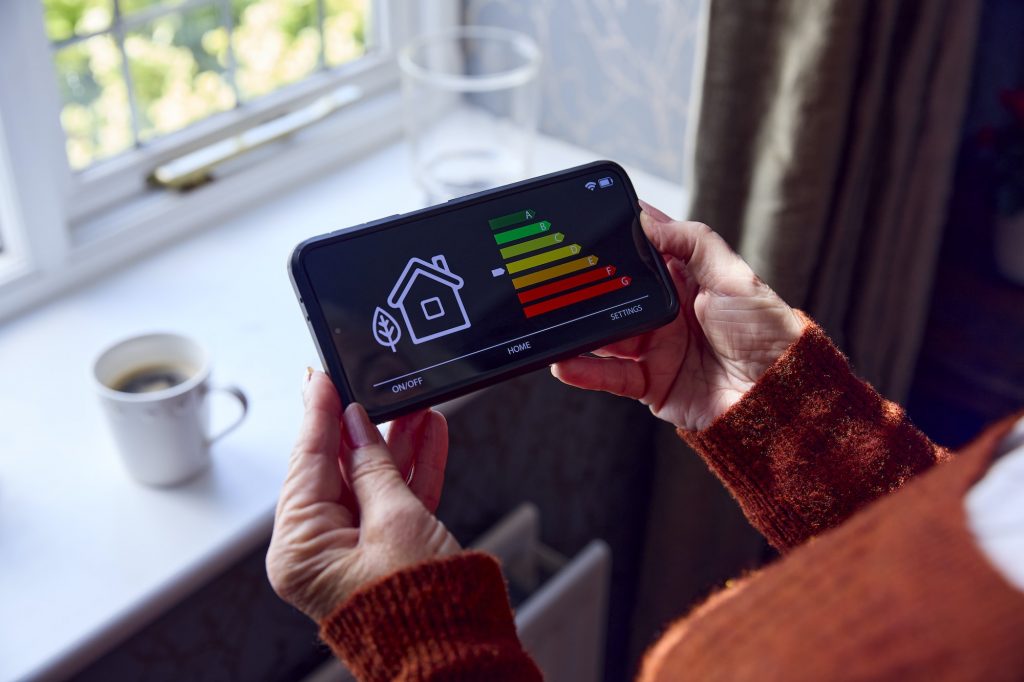The year 2023 is expected to bring in new and innovative heating and cooling trends that will revolutionize the way we think about home comfort. In this article, we will explore the top high-end home heating and cooling trends for 2023 that are expected to dominate the industry.

1. Mechanical Ventilation with Heat Recovery (MVHR) System
One of the most popular trends in home heating and cooling for 2023 is the Mechanical Ventilation with Heat Recovery (MVHR) system. This innovative system has gained popularity due to its ability to provide fresh, filtered air into your home while retaining the majority of the energy that has already been used in heating it. [1]
2. Smart Heating and Cooling Systems
Smart heating and cooling systems are expected to be a major trend throughout 2023 and beyond. These systems can be controlled remotely through a mobile device, allowing you to adjust your home’s temperature from anywhere. They also can learn your preferences and automatically adjust the temperature to your liking, making them an ideal choice for homeowners who want to save energy and money. [2]
3. Increased Demand for Air Filters
The COVID-19 pandemic has made people more aware of the air they breathe, and as a result, there is an increased demand for air filters in both residential and commercial buildings. High-quality air filters are being installed to ensure safe air circulation, and this trend is expected to continue throughout 2023. [9]
4. Going Green
Governments across Europe and the UK are taking measures to make homes greener, and this trend is expected to continue in 2023. Heating and cooling in buildings and industry account for half of the energy consumption, and financial incentives and legislation are being put in place to make homes more energy-efficient. This not only helps to reduce carbon emissions but also helps homeowners save money on energy bills. [5]
5. Improved Efficiency
With temperatures in 2023 expected to be among the hottest on record, it’s important to have heating and cooling systems that are energy-efficient. The HVAC industry is growing rapidly, and new standards are being put in place to help improve efficiency while keeping homes comfortable. This trend is expected to continue throughout 2023 and beyond. [4][6]
6. Personalized Comfort
With the rise of smart home technology, personalized comfort is becoming a must-have for homeowners. Heating and cooling systems that can learn your preferences and automatically adjust the temperature to your liking are becoming more popular. This trend is expected to continue in 2023, with more and more homeowners investing in systems that provide personalized comfort.
7. Biomass-Fired Heating Plant
The global biomass-fired heating plant market is expected to continue to grow in 2023, with a compound annual growth rate of 6.9%. This is due to the increasing demand for sustainable heating solutions that reduce carbon emissions. Biomass-fired heating plants use organic materials, such as wood chips, to generate heat, and are becoming more popular as a sustainable alternative to traditional heating systems. These systems use organic materials, such as wood chips, to generate heat, and have lower carbon emissions compared to traditional heating systems. The global biomass-fired heating plant market was valued at $4.4 billion in 2020 and is projected to reach $7.5 billion by 2028, with a compound annual growth rate of 6.9%. This growth is due to the increasing demand for sustainable heating solutions that reduce carbon emissions. [10]
8. Improved Air Quality
In addition to air filters, air quality is becoming an important factor in home heating and cooling systems. Homes and buildings are being equipped with sensors that can detect air pollutants and provide data on air quality. This trend is expected to continue in 2023, with more focus on improving indoor air quality.
9. Integration with Renewable Energy
As more homeowners turn to renewable energy sources, such as solar panels, heating and cooling systems are being integrated with these sources to provide more sustainable solutions. This trend is expected to continue in 2023, with more homeowners investing in integrated systems that use renewable energy sources to heat and cool their homes.
10. Improved User Experience
Heating and cooling systems are becoming more user-friendly, with easy-to-use interfaces and smart home integration. This trend is expected to continue in 2023, with more emphasis on creating systems that are easy to use and provide a seamless user experience.
11. Increased Connectivity
Connectivity is becoming a key feature of heating and cooling systems, with more systems being designed to connect to the internet and other smart devices. This allows homeowners to control their systems remotely and receive data on energy usage and efficiency. This trend is expected to continue in 2023, with more focus on creating connected systems that provide real-time data on home heating and cooling.
12. Zoning
Zoning is becoming more popular in home heating and cooling systems, allowing homeowners to control the temperature in different areas of their homes independently. This trend is expected to continue in 2023, with more homeowners investing in zoning systems that provide more precise temperature control and energy efficiency.
13. Heat Pumps
Heat pumps are becoming a popular alternative to traditional heating and cooling systems, especially in areas with moderate climates. These systems use electricity to transfer heat from one location to another, providing both heating and cooling capabilities. This trend is expected to continue in 2023, with more homeowners investing in heat pump systems that provide energy-efficient heating and cooling.
14. Solar Heating
Solar heating is becoming more popular as homeowners look for sustainable solutions to their heating and cooling needs. Solar panels can be used to heat water, which can then be used for radiant floor heating or to heat air in a ventilation system. This trend is expected to continue in 2023, with more homeowners investing in solar heating systems that provide sustainable solutions to their heating needs.
15. Geothermal Heating and Cooling
Geothermal heating and cooling is another sustainable alternative to traditional heating and cooling systems. These systems use the constant temperature of the earth to provide heating and cooling capabilities, providing energy-efficient solutions to homeowners. This trend is expected to continue in 2023, with more homeowners investing in geothermal systems that provide sustainable heating and cooling solutions.
In conclusion, 2023 is expected to bring in new and innovative high-end home heating and cooling trends that are more sustainable, energy-efficient, and provide a better user experience. These trends include smart heating and cooling systems, improved air quality, integration with renewable energy, improved user experience, and more. As homeowners continue to look for more sustainable solutions to their heating and cooling needs, these trends are expected to continue to dominate the industry in 2023 and beyond.






